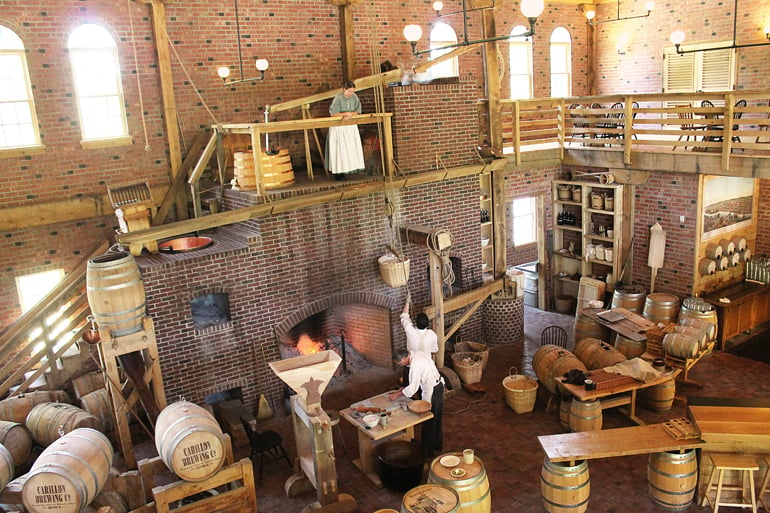Start 14-Day Trial Subscription
*No credit card required

Antebellum Ales: Carillon Brewing Company Tour
The Beers
As with the building and the brewery, Brock’s recipes are the product of intense research. “I looked at commercial brewing cookbooks,” Brock explains, “and then also looked at housewife cookbooks and handwritten diaries to find out what are the styles from each of those [sources]. What were the similarities, what were the differences?”
A certified master food preservationist with a degree in cultural anthropology, Brock dove deep into the nature of the recipes themselves: “I looked at the ingredients that they were using, and how that was reflective of the seasonality of those ingredients, where those ingredients would have been grown … going back to the canal and agricultural reports, to find out, ‘Where was the last shipment of spelt in the Dayton area. Or, barley?’… which could help me understand, with the [help of the] Department of Agricultural at Ohio State, what strands of barley they were using. So it wasn't just, 'let's find a recipe and make the beer.' I knew that the ingredients had changed, so I wanted to find out where those individual ingredients were, what were the species and varietals that they were using, and then find sources that could match that. Or at least be smart enough to say, 'yeah, I can't get that anymore but here's the sugar difference, or here's the protein value difference.'”

As would have been true in the 1850s, Carillon produces beer the really hard way, doing much of the work by hand.
The building itself also contributes to the flavor of the beers. Despite the old recipes, Brock’s initial batches tasted fairly modern – clean beers fermented with Saccharomyces cerevisiae. Eventually, the ambient flora and fauna, including Brettanomyces, lactobacillus, pediococcus, started finding its way into the beer and changing its flavor. Because these flavors are true to the historic style, Brock made a conscious decision not to fight it. “I could control it, but then I would be a modern brewer,” explains Brock.



